




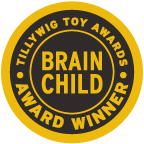
Collapsible content
In this game, 2-5 players compete to be first to use all 12 of their numbered tiles. Space It is designed for players aged 8 and up, and plays quickly in about 20 minutes.
The game contains 96 tiles, three sets numbered from 1 to 30, plus six joker tiles which can represent any value. There are five player screens where you can hide your own pieces, and a big bag to hold the rest.
Space It teaches sequencing and number patterns, which are preliminary steps toward advanced mathematics like algebra. It also requires the problem-solving skills and innovation.
Here’s how to play. Each player receives 12 tiles from the cloth bag. Place them behind your player screen so they are hidden from view. The person who has most recently watched a science fiction movie begins the game.
During the first round, you must “open” by creating a new sequence of three or more tiles, vertically or horizontally. The value between tiles in a sequence must be “spaced” the same. For example in the sequence 3, 7 and 11, each value is 4 apart.
The numbers 13, 14 and 15 are also a perfectly legal sequence - the intervals are one apart. If you ever play a new sequence which contains all three colors (red, blue and yellow) - this is a TIME WARP and all your opponents have to draw an extra tile from the cloth bag.
Beginning with your second turn, you are permitted to add tiles to an existing sequence - yours or even another player’s. You can put more tiles on the front or end of a sequence, as long as they follow the spacing already established.
You can insert two or more tiles into the middle of a sequence and alter its spacing. This sequence just changed from spacing of 2, into a sequence with spacing of 1.
And you may join two or more sequences in crossword fashion by adding new tiles that connect them. You are allowed to rearrange tiles on the table, as long as you don’t break up any sequences.
The joker tiles are very powerful as they can represent any number from 1 to 30. Announce the value chosen as you play a joker. On a future turn, if a player has the actual tile a joker represents, they may put that number into play in its place, and take the joker behind their screen to redeploy at any new value.
Also remember that two tiles are never a valid sequence. So if two tiles are adjacent, you must place a legal third tile that matches their spacing.
If you are ever unable to play, simply draw a tile from the bag and pass. The game ends when a player places their last tile and reveals nothing is left behind their player screen. Congratulate them on their victory.
Because Space It plays quickly, you can play again right away. It’s a great workout for your brain to work with numbers and come up with the best combinations. Plus these tiles are useful manipulatives for all kinds of math activities. Feel free to put them to work in other ways!


Core Standard*: Math
Math
- Operations and Algebraic Thinking
- Add and subtract within 20. Grade Levels 1st, 2nd
- Number & Operations in Base 10
- Understand place value. Grade Level 1st
- Mathematical Practice
- Make sense of problems and persevere in solving them. Grade Levels 3rd, 4th
- Model with mathematics. Grade Levels 3rd, 4th
- Look for and make use of structure. Grade Levels 3rd, 4th

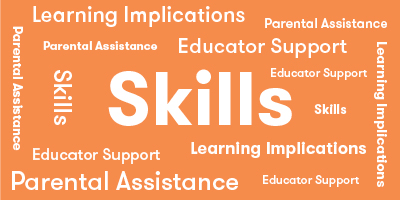
Explore
What Does Child Do To Use Skill In The Game?
Players explore the pieces they in front of them and examine the range of numbers.
How Parents Can Assist Learning
Remind children to look at all the potential tiles they can move on their turn, including moving existing number sequences together and inserting tiles into an existing sequence. This will encourage patience and discourage impulsivity.
Learning Implications and Educator Support
Remind children to look at all the potential tiles they can move on their turn, including moving existing number sequences together and inserting tiles into an existing sequence. This will encourage patience and discourage impulsivity.
Determine
What Does Child Do To Use Skill In The Game?
Players arrange tiles in various ways to determine potential sequences of numbers.
How Parents Can Assist Learning
Parents can make suggestions for how to analyze the sequences. For example, "Look at the number difference between two of your tiles, add that same number to the higher number and see if you have next number." For example, the child has 3 and 8. There is a space of 5 between these numbers, so if you add 5 to 8, child needs a 13. Demonstrate if needed.
Learning Implications and Educator Support
Space It! is a great game for teaching number sequencing and patterning. It also helps develop spatial reasoning and directionality as children look for oppotunities to create or connect sequences vertically and horizontally.
Educators can make suggestions for how to analyze the sequences. For example, "Look at the number difference between two of your tiles, add that same number to the higher number and see if you have next number." For example, the child has 3 and 8. There is a space of 5 between these numbers, so if you add 5 to 8, child needs a 13. Demonstrate if needed.
Compare
What Does Child Do To Use Skill In The Game?
Players compare the numbers they have with the ones on the board to see if there is a place to add a number or sequence, or to make a Time Warp.
How Parents Can Assist Learning
Making mental models of sequences is an advanced, complex cognitive skill that supports learning spatial relations, pattern recognition and creative problem solving. To help children learn these skills, ask them to describe aloud the different sequences they can make and the potential consequences for themselves and opponents for each sequence. Remind children that they can look on the board for numbers to add inside, not just at the end of, an existing sequence.
Learning Implications and Educator Support
Making mental models of sequences is an advanced, complex cognitive skill that supports learning spatial relations, pattern recognition and creative problem solving. To help children learn these skills, ask them to describe aloud the different sequences they can make and the potential consequences for themselves and opponents for each sequence. Remind children that they can look on the board for numbers to add inside, not just at the end of, an existing sequence.
Remember
What Does Child Do To Use Skill In The Game?
Players need to remember addition facts.
How Parents Can Assist Learning
There is no special adult support required.
Learning Implications and Educator Support
There is no special adult support required.
Predict
What Does Child Do To Use Skill In The Game?
Players can predict what numbers are needed for a sequence.
How Parents Can Assist Learning
Ask children to say what number they need to make a sequence and to guess whether they think they will pick it on their turn.
Learning Implications and Educator Support
Ask children to say what number they need to make a sequence and to guess whether they think they will pick it on their turn.
Plan
What Does Child Do To Use Skill In The Game?
Players make plans for how to arrange the sequences spatially on the board.
How Parents Can Assist Learning
To be successful in this game requires thinking about consequences beyond a player's immediate move. Parents can remind children to think about what could happen next so children will plan accordingly. This type of long-term, sequential thinking is important well beyond game play.
Also, encourage children to move their tiles around when it is not their turn. This technique, i.e. physically changing objects, is good for visualizing new patterns and changing perspective needed to solve Space It!
Learning Implications and Educator Support
Educators can encourage children to look at options for reaching a goal. Ask questions like "Where are you trying to extend a sequence?" or "Can you make a Time Warp?" Also, Space It! is a good game for helping children develop organizational skills as they plan moves, and adaptive skills as they creatively respond to moves of opponents. Organizing is essential to effective planning and is an important executive functioning skill.
To be successful in this game requires thinking about consequences beyond a player's immediate move. Educators can remind children to think about what could happen next so children will plan accordingly. This type of long-term, sequential thinking is important well beyond game play.
Experiment
What Does Child Do To Use Skill In The Game?
Players experiment with their own tiles for different number combinations. For example, look at two tiles, see if a third matches the pattern.
How Parents Can Assist Learning
Encourage children to move their tiles around when it is not their turn. This technique, i.e. physically changing objects, is good for visualizing new patterns and changing perspective needed to solve Space It!
Learning Implications and Educator Support
Educators can encourage experimentation and movement of the tiles to stimulate thinking of options.
Practice
What Does Child Do To Use Skill In The Game?
Players practice addition.
How Parents Can Assist Learning
Parents can partner with a child to help them look at different options and practice their addition.
Learning Implications and Educator Support
Playing Space It! is a good way for children to practice number sequencing and addition. Educators can partner with a child to help them practice addition facts while they figure out sequences.
Solve
What Does Child Do To Use Skill In The Game?
Players need to create logical sequences to create accurate sequences.
How Parents Can Assist Learning
Encourage children to remain flexible in their approach to the game. It is difficult to predict what opponents will do. Thus, it is important to adapt based on prior moves. Adapting is key to building resilience and creative problem solving.
Also, parents can encourage children to use smaller and larger numbers to make a sequence, not just numbers that are close together. For example, 2, 12, 22.
Learning Implications and Educator Support
This game involves uses of directionality, addition and if/then problem solving. As children play they learn new information constantly as different tiles are played, drawn and moved around. This information directly effects how children strategize an approach for placing their tiles, and ultimately solve the game.
Encourage children to remain flexible in their approach to the game. It is difficult to predict what opponents will do. Thus, it is important to adapt based on prior moves. Adapting is key to building resilience and creative problem solving.
Demonstrate
What Does Child Do To Use Skill In The Game?
If questioned on pattern, players need to explain their reasoning.
How Parents Can Assist Learning
Parents can ask children to demonstrate their understanding after they place their tiles, by explaining their pattern. This is particularly important if an error is made, so children can identify their mistake.
Learning Implications and Educator Support
Educators can ask children to demonstrate their understanding after they place their tiles, by explaining their pattern. This is particularly important if an error is made, so children can identify their mistake.
*Data compiled from CCSSI ELA Standards, WA Science Standards, and Washington Social Studies Standards

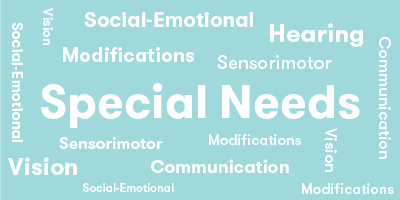
Cognitive
Suggestions for How to Modify Play Experience
Play the game only with numerical sequences that have no space in between (example: 1, 2, 3 or 15, 16, 17). All sequences should be in horizontal rows. The goal is to assemble a long row in numerical order. Allow players to put numbers any where (front, middle, back) in a sequence on the table. Also, allow players to start as many new sequences as they want, and to move sequences together when possible (example, a sequence of 4, 5, 6 and be moved to connect with a sequence 7, 8, 9, 10).
Building on the first cognitive modification, encourage players to match number vertically. For example, if a sequence of 4, 5, 6 is on the table, a player may put one or more 6s below the 6 in the sequence.
Communication
Suggestions for How to Modify Play Experience
Have children work in pairs. If possible, have a more advanced player teamed with a less advanced player. Play either the regular game rules or those in the Cognitive modifications for the game. Encourage children to actively listen and take turns talking.
Sensorimotor
Suggestions for How to Modify Play Experience
Not recommended for children with sensorimotor needs.
Social Emotional/Behavioral
Suggestions for How to Modify Play Experience
Have children work in pairs. If possible, have a more advanced player teamed with a less advanced player. Play either the regular game rules or those in the Cognitive modifications for the game. Encourage children to collaboratively create sequences and to make compromises.
Vision
Suggestions for How to Modify Play Experience
Some children with visual impairment will not be able to play this game. Try allowing the child to use a magnifying glass.
If child cannot distinguish colors but can read the numbers, Change rules so to eliminate "Time Warp".
Hearing
Suggestions for How to Modify Play Experience
No modifications needed.
*Data compiled from CCSSI ELA Standards, WA Science Standards, and Washington Social Studies Standards

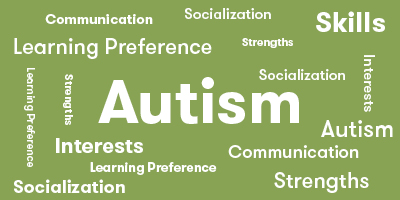
Autism Strengths & Interests
Short Summary of Strengths & Interests
- Likes and is good at addition.
- Good at making sequences and seeing number patterns.
- Enjoys activities that follow clear, predictable rules such as math.
Is good at matching visual items
This game is not appropriate
Has a good memory for sensory details, including visual, touch, taste and smell
This game is not appropriate
Has a good memory for words, phrases and dialouge
This game is not appropriate
Has a good memory for pictures, numbers and patterns
Is This Game Appropriate? Yes
Description
Children can create a Space It! pattern by looking at the numbers in front of them and rearranging them into equally spaced intervals that will fit with a number on the board. This requires understanding the need to add the same number to each member of the pattern. Children who have a high level of ability to understand numbers can often create these patterns effortlessly.
Likes to put things in order or a sequence
Is This Game Appropriate? Yes
Description
Space It is great for children with autism who have an interest in math and can do basic addition. It requires players to create number pattern sequences with equal intervals and build on the number sequences already on the board. Children with autism often like patterns because they are predictable. Children can learn flexibility by seeing that interval patterns can be created with any number. The sequences on the board may be modified to create a new pattern, however, which may be troublesome to some children. If this is upsetting to the child, change the rules to eliminate this option, or gradually introduce this alternative as the child becomes familiar with the game.
Learns through visualizing or "replaying" actions in their mind
This game is not appropriate
Likes activities with rules, such as math and phonics
Is This Game Appropriate? Yes
Description
Space It! is based on one rule, making sequences of numbers that are the same spaces apart. Space It! also requires basic understanding of addition. Thus, the game is great for children who like to follow the rules while building sequences and patterns based on addition and numbers.
Is very concrete and literal
This game is not appropriate
Learns in small "chunks" (for example, phone numbers are 3 chunks of number xxx-xxx-xxxx that are combined together)
Is This Game Appropriate? Yes
Description
Each time a player makes a new sequence, it represents the spacing between numbers. For example, the sequence 5, 10, 15 is a chunk of spacing in five increments. Children who are good at chunking information will hone that skill as they create sequences, add to existing sequences, or even change sequences on the table by inserting tiles to create a different sequence with a new increment (for example, taking 4, 8, 12 and inserting 6 and 10 to change it to a two increment sequence).
Is good at nonverbal reasoning and logic
Is This Game Appropriate? Yes
Description
Reasoning with numbers involves understanding patterns and applying logic to the numbers provided to obtain an answer. In Space It!, creating or modifying sequences does not require verbalizing or writing down one's reasoning. Therefore, children who are good at non-verbal reasoning may feel comfortable playing Space It!.
Likes spatial problem solving
Is This Game Appropriate? Yes
Description
Creating sequences and patterns of numbers involves spatial problem solving. Children who enjoy visual problem-solving activities, such as puzzles and tangrams, will likely enjoy using those skills in Space It.
Can read well with good vocabulary, though may not fully comprehend content
This game is not appropriate
Likes to use and has good fine motor skill
This game is not appropriate
Likes established routines or set ways of doing things
This game is not appropriate
Likes manipulating, constructing or building things
This game is not appropriate
Likes to use and has good musical abilities
This game is not appropriate
Likes to use and has good drawing skills
This game is not appropriate
Autism Special Considerations
Appears to ignore other's communication and/or has difficulty giving eye contact to a communication partner
Is This Game Appropriate for Child with Characteristic? Yes
Can Child with Characteristic Play Game w/o Modification? Yes
Strategies for Developing Compensatory Skills:
Sit at an angle to the child, so direct eye contact is not needed.
Look at the game instead of each other.
Use unusual or exaggerated inflection to begin a communication about the game. This attracts the child's attention.
Has difficulty understanding complex verbal directions
Is This Game Appropriate for Child with Characteristic? Yes
Can Child with Characteristic Play Game w/o Modification? No
Strategies for Developing Compensatory Skills:
Space It! is not an appropriate game for children who have difficulty understanding complex directions. Children need to understand spatial options, patterning, and how to use a wild tile.
Uses vocabulary inaccurately or demonstrates echolalia (repeating another's speech)
Is This Game Appropriate for Child with Characteristic? Yes
Can Child with Characteristic Play Game w/o Modification? Yes
Strategies for Developing Compensatory Skills:
Respond to immediate echolalia (repeating what was just said) by rephrasing the child's response into a correct format, so the child can hear and repeat that phrase. For example, assume you are playing with a child named Andy and you say, "Your turn," and Andy repeats, "Your turn." You can say, "It's Andy's turn. You say, my turn." This allows the child to hear and repeat the correct response. Eventually, the child will pick up the pattern of response.
Delayed echolalia (repetition of previously heard comments) may have a hidden meaning or association. Look for connection in the phrase used to the current situation. For example, the child says, "After these messages we'll be right back!" Think what the repeated phrase is associated with for the child. Try to interpret what is meant and rephrase it for the child. For example, you might respond by saying, "It sounds like you want a break for a few minutes. Is that what you mean? You can tell me, 'I need a break.'"
Gets stuck repeating a verbal topic or physical actions and/or has difficulty attending to others' actions or topic.
Is This Game Appropriate for Child with Characteristic? No
Can Child with Characteristic Play Game w/o Modification?
Strategies for Developing Compensatory Skills:
Children need to pay attention to other player's intentions and actions, as they need to play both their own board and other players". For this reason, Space It! is not recommended for children with this concern.
Has difficulty producing speech/communication
Is This Game Appropriate for Child with Characteristic? Yes
Can Child with Characteristic Play Game w/o Modification? Yes
Strategies for Developing Compensatory Skills:
Use augmentative communication, such as picture cards. For example, a picture of person pointing to another person means "your turn."
Communication is not required.
Has difficulty sequencing multi-step actions and/or doing complex abstract tasks
Is This Game Appropriate for Child with Characteristic? No
Can Child with Characteristic Play Game w/o Modification?
Strategies for Developing Compensatory Skills:
Space It! has complex directions and involves abstract tasks. It is not recommended for children with special needs unless they have expertise with numbers and patterns.
Demonstrates difficulty initiating and maintaining social interactions
Is This Game Appropriate for Child with Characteristic? Yes
Can Child with Characteristic Play Game w/o Modification? Yes
Strategies for Developing Compensatory Skills:
Develop a social story to be read at the start of a game. A social story is a short booklet that illustrates how a child can use positive social skills. It includes two to five descriptive statements and a directive statement. For example: "When I watch others, I will know when it is my turn. Others like me when I take turns. I will watch what others do with their pieces and listen to what they say. Others like it when I talk about the game." Add photos or drawings of the child doing the actions described in the story.
Role play social situations and reinforce appropriate words and actions. For example, role play commenting on another player's turn. For instance, "I see your pattern. Add 2 each time."
Use video feedback of positive social behaviors. Video of actual play enables children to see what they or others did. Appropriate actions and interactions can then be discussed.
Acts out or demonstrates avoidance behaviors when frustrated, overwhelmed, or needs more sensory input.
Is This Game Appropriate for Child with Characteristic? Yes
Can Child with Characteristic Play Game w/o Modification? No
Strategies for Developing Compensatory Skills:
Reduce extraneous noise or allow the child to wear head phones or ear plugs if loud sounds cause anxiety.
A weighted vest worn during the game may provide additional pressure input and thus reduce fidgeting due to sensory needs. Pressure can be calming when used for no more than 20 minutes at a time.
Practice a phrase to ask for help and role play situations in the game where it is needed.
Provide techniques for self-calming, such as holding a special toy.
Allow time for movement. For example, a child who needs to move frequently can be given an opportunity to 'celebrate' their turn by running around the table or jumping up and down 10 times.
Has short attention span for non-preferred activities
Is This Game Appropriate for Child with Characteristic? No
Can Child with Characteristic Play Game w/o Modification?
Strategies for Developing Compensatory Skills:
Not recommended for children with a short attention span, unless number games are a preferred activity.
Needs sameness or consistent routines and/or has difficulty with transitions from one activity to another
Is This Game Appropriate for Child with Characteristic? Yes
Can Child with Characteristic Play Game w/o Modification? Yes
Strategies for Developing Compensatory Skills:
Play games at the same time every day, so the child anticipates the game routine.
Change the location of the game, so the child may play in different rooms, at the table, or on the floor. This will build tolerance for variation.
Prepare the child ahead time for the introduction of a new game. Talk about aspects that will be motivating for the child, and let them explore the parts of the game before setting out the whole game.
Provide a structure for placement of game pieces that can be the same each time the game is played. For example, have a specific location for where the board goes, the pieces, etc.Provide choices for how the child can be involved in set up or clean up. For example, you might ask, "Do you want to hand out the people or set up the board?"
Involve the child verbally and with actions for the transition to the game table or at the end of game play. For example, you might say, "Let's look at the pictures on the game box and guess what it is about."
Use an object cue. Let the child hold an object from the game or activity you want to introduce prior to the transition. For example, if you were intending to play Space It!, you would hand the child a number tile from the game and say, "Look here is a number tile. Let's find the game it goes in."
Has difficulty understanding others' feelings, intentions, and the reasons for others' actions.
Is This Game Appropriate for Child with Characteristic? No
Can Child with Characteristic Play Game w/o Modification? No
Strategies for Developing Compensatory Skills:
Not recommended for children with this concern.
*Data compiled from CCSSI ELA Standards, WA Science Standards, and Washington Social Studies Standards

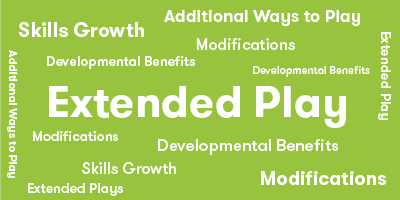
Extra Ways to Play the Game
On a turn, a player may stack 2 tiles together to create a new number and place that number on the board according the rules of the game. Example, stack a 7 and 20 together to make 27.
Materials Needed
No additional materials needed.
Developmental Benefits
This modification allows children to expand the number learning past 30.
Extra Ways to Play the Game
Rather than place a tile or sequence, a player may choose to swap up to 5 tiles from their pile with those in the bag.
Materials Needed
No additional materials needed.
Developmental Benefits
This feature can make the game more fun by allowing children to remove tiles that they cannot use and, hopefully, obtain tiles that they can use. Additionally, this adds a new dimension of risk and reward analysis that is part of congnitive development and statistical analysis.
*Data compiled from CCSSI ELA Standards, WA Science Standards, and Washington Social Studies Standards
Game Details
- 90 Space It! Tiles
- 6 Joker Tiles
- 5 Player Screens
- 1 Cloth Bag
- 1 Rules Booklet
- Choosing a selection results in a full page refresh.
- Opens in a new window.









